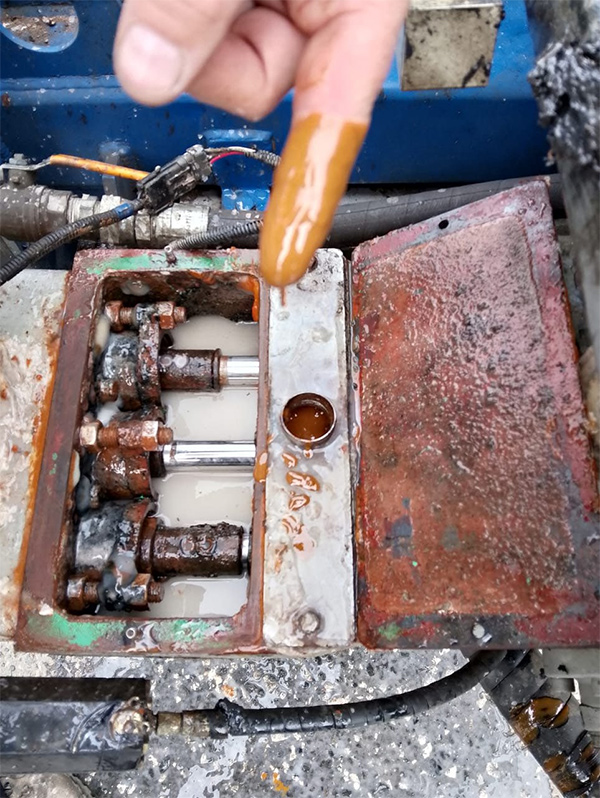
Why Piston Seals Are Critical
Piston seals in a mud pump are designed to ensure tight contact between the piston and the liner, preventing drilling fluid from leaking into the power end of the pump. They operate under high pressure and in an abrasive environment, which makes them one of the most stressed consumables in the pump.
How Seal Failure Happens
Over time, piston seals lose elasticity due to constant friction, high temperatures, and chemical exposure from drilling fluids. If they tear or rupture, the barrier between the hydraulic end and the power end is compromised. This allows bentonite-based drilling fluid to pass into the crankcase (‘bath’) of the pump, mixing with lubricating oil.
Common causes include:
- Normal wear after exceeding service hours.
- Excessive pressure surges or hydraulic shocks.
- Poor drilling fluid quality with high solids content.
- Incorrect piston material for the specific drilling environment.
- Improper installation or misalignment of the piston in the liner.
Symptoms During Operation
- Operators can detect piston seal failure by several signs:
- Drilling fluid mixed with oil in the pump’s crankcase (‘bath’).
- Milky or emulsified oil drained from the power end.
- Loss of working pressure and efficiency in fluid circulation.
- Increased vibration and abnormal knocking noises from the pump.
Consequences of Ignoring the Problem
If the pump continues to run with damaged piston seals, bentonite slurry quickly contaminates the lubricating oil. This leads to poor lubrication of bearings and gear sets, causing accelerated wear or catastrophic failure of the power end. Additionally, constant fluid intrusion may corrode internal metal surfaces and significantly reduce pump lifespan.
Recommended Actions
- Stop the pump immediately if bentonite is detected in the crankcase.
- Drain contaminated oil, flush the power end, and refill with fresh oil.
- Milky or emulsified oil drained from the power end.
- Replace piston seals on all pistons, not just the failed one, to ensure uniform performance.
- Inspect liners and pistons for wear; replace if scoring or damage is present.
- Verify fluid quality and maintain proper drilling mud cleaning equipment.
Conclusion
A torn piston seal is not just a routine maintenance issue—it can compromise the entire mud pump. Prompt replacement of piston seals, monitoring drilling fluid quality, and proper material selection are essential to prevent bentonite intrusion into the crankcase and to extend the service life of the equipment.
